Nestled at the northeastern end of Nova Scotia lies the island of Cape Breton, an expansive and sparsely populated land, home to many small rural communities, each with a pride and passion in their own neighbourhood and micro-culture. There is a predominantly Scottish heritage, stemming from the Highland Clearances of the late 18th and early 19th centuries, but also significant French, Irish and indigenous Mi’kmaq cultures adding to the mix.
Now in its 23rd year, Cape Breton’s Celtic Colours International Festival, which takes place as the beautiful fall colours of the red oak, mountain ash and maple trees blanketing the island reach their peak, brings these cultures together for a 9-day celebration of them all. Staged in more than 300 venues around the island – mostly community halls – over 2,000 volunteers come together to help make this one of the most genuinely welcoming festivals there is.
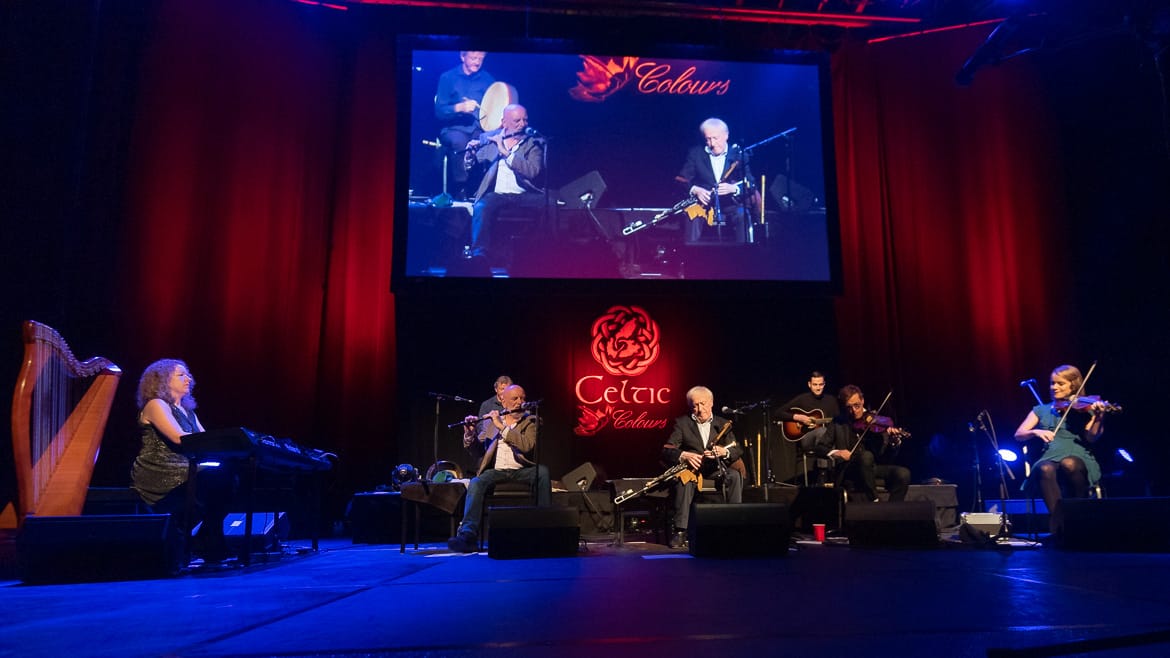
The Chieftains
Celebrating a quite magnificent 57 years on the scene, Irish ambassadors, The Chieftains, headlined a showstopping opening concert in Cape Breton’s capital, Sydney. One could be forgiven for expecting the band to rest on past glories, but showing that they have not lost any of their stagecraft, the three remaining members of the band – Paddy Moloney (the only founding member), Matt Molloy, and Kevin Conneff – brought together a wonderful and crowd-pleasing variety of local talent to complement their regular band of touring musicians and dancers, and thoroughly entertained the 3,600 crowd. The Cape Breton University Pipe Band, having kicked off the evening’s proceedings earlier, joined the band for the San Patricio March, while the Cathcart Choir and a troupe of local young dancers got their chance to shine alongside performers of the highest calibre.
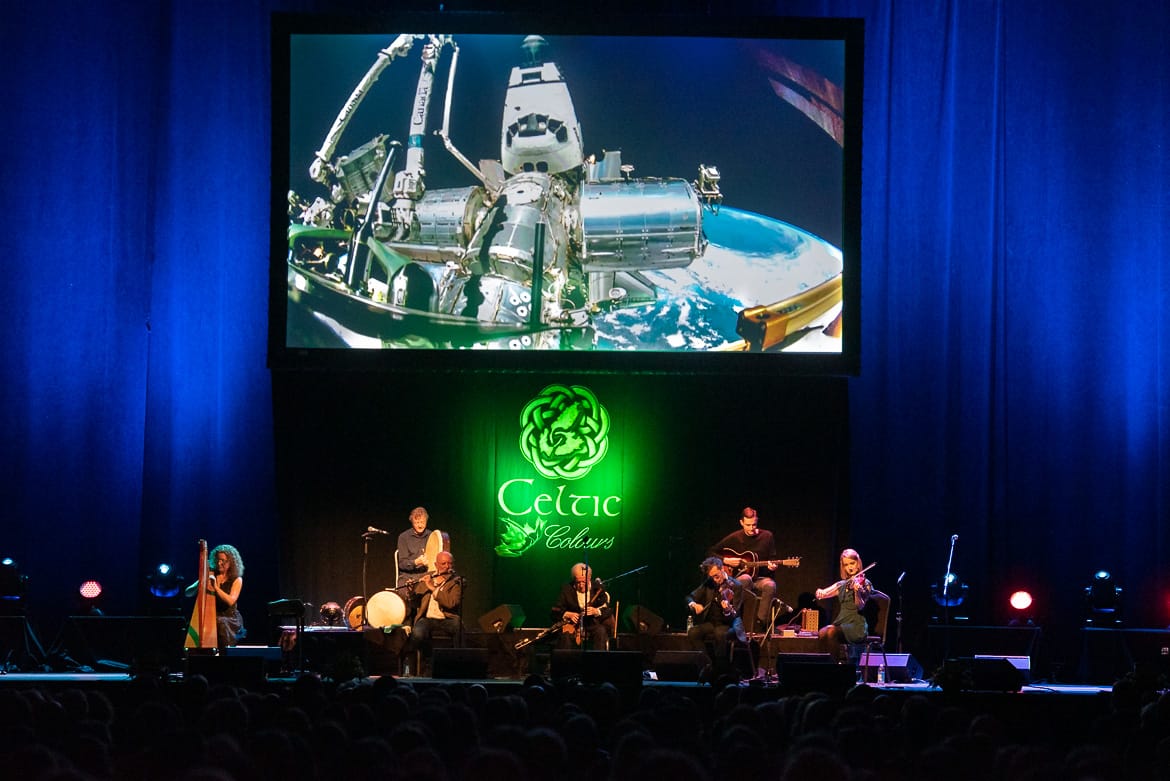
The Chieftains
Various pieces of video footage accompanied the performance, and of particular fascination amongst them was the NASA footage of astronaut Catherine Coleman – who had taken a whistle of Paddy’s and a flute of Matt’s to the International Space Station – and some stunning images of the aurora australis played along to the Turlough O’Carolan tune, Fanny Power.
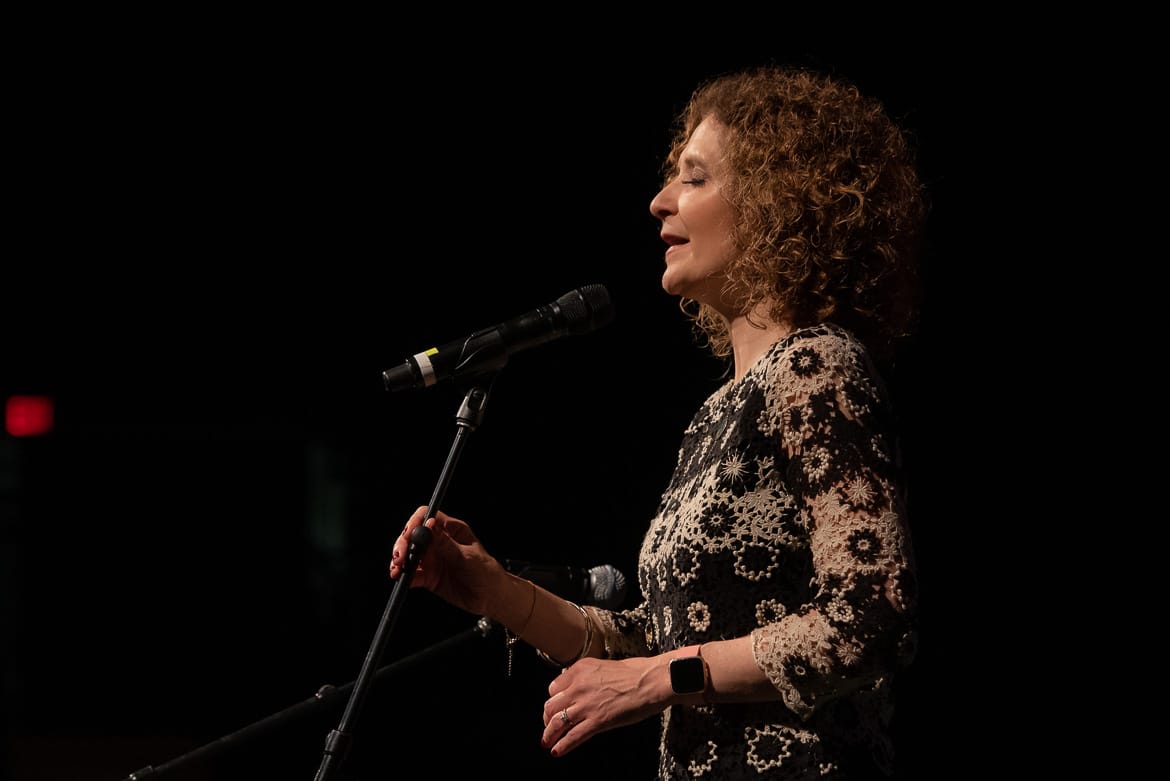
Alyth McCormack
Scottish singer, Alyth McCormack, sang Red is the Rose – traditional Irish words sung to the Scottish air of Loch Lomond – while dancer Cara Butler accompanied Conneff’s rendition of Cotton Eyed Joe, and dancers Jon (also playing fiddle with the band) and brother Nathan Pilatzke paired up for a hoofing competition with some Ottawa Valley step dancing, a more flamboyant variation of the traditional hands-at-the-side steps.
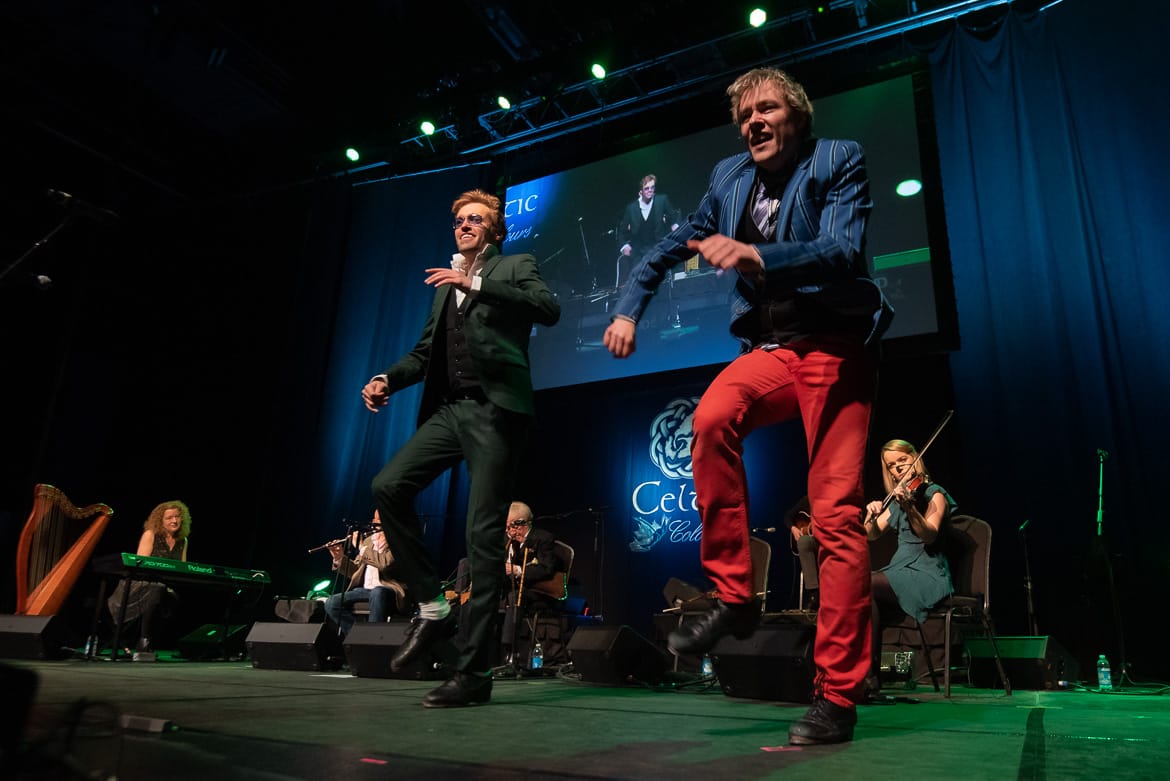
Jon & Nathan Pulatzki with The Chieftains
Dancing is a big deal in Cape Breton – a cheer is guaranteed whenever anyone takes to the floor – and the Close to the Floor gig, in the musical mecca of Mabou, was dedicated to the step dancing traditions of the island. Hosted by Margie Beaton – a musician and dancer in her own right – with unscripted off-the-cuff warmth and knowledge, a stream of local dancers performed lively traditional sets with local musicians. Dancing from the Québécois also featured, with Pierre and Alexis Chartrand accompanying a sprightly Nicolas Babineau, while Mairi Campbell (Scotland) and Nic Gareiss (Michigan) came together in a quirky yet mesmerising version of Dave Francis’ The Piper and the Maker, Gareiss being confidently and effectively understated in his movements. Ottawa Valley native, April Verch, headlined with a joyous set, which included Sandy River Belle and the great fun Hazelwood/Aitchison song, Sick, Sober and Sorry (but oh what fun we had!).
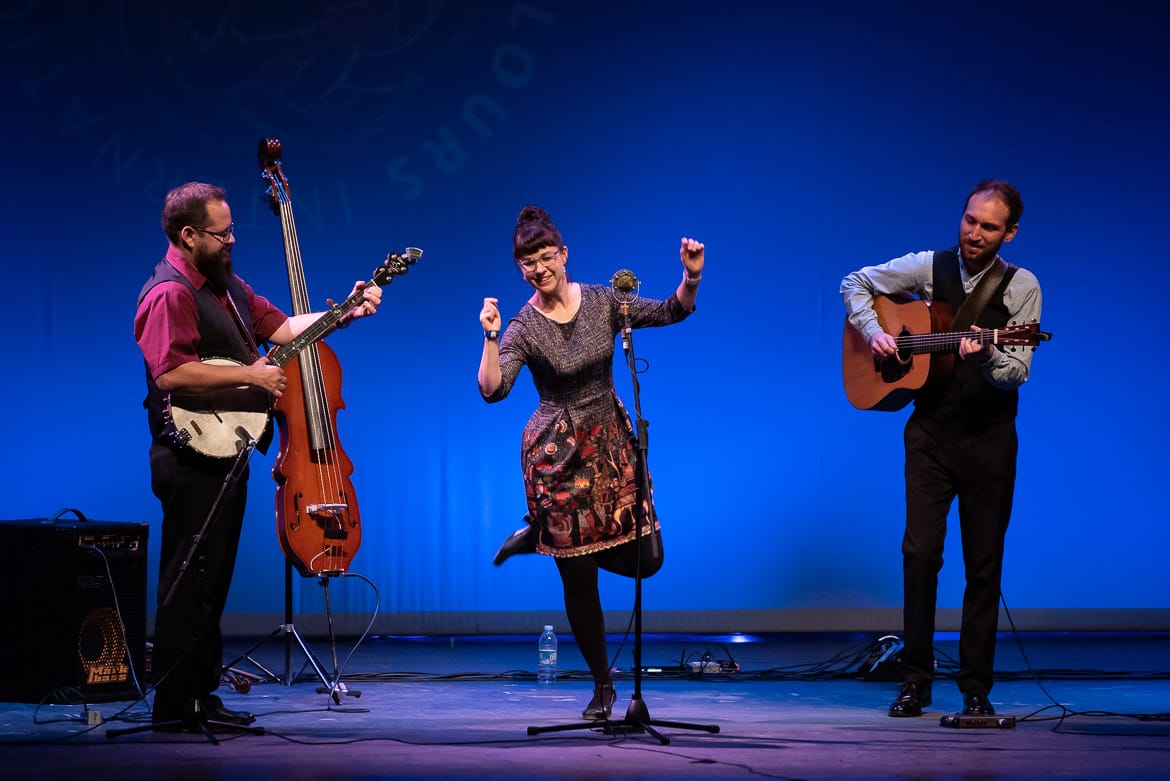
April Verch Band
The ever-enthusiastic, not to mention virtuosic, Tim Edey was a ubiquitous presence during the Festival – one could be forgiven for thinking that he was one of the musicians in residence – and was found accompanying the flying fiddling of Dwayne Coté, popping in for a tune with local musicians Troy MacGillivray (fiddle/piano), Andrea Beaton (fiddle), and Troy’s sister, Sabra (step dance/bodhran), as well as numerous appearances at the infamous Celtic Colours Festival Club – which this year saw local musician and singer, Buddy Macdonald honoured on the 2nd night as he hit his 200th occasion of hosting the club. However, it was Edey’s pairing with local legend J.P.Cormier for the Craic’n’Cabaret concert that really had the jaws dropping as the pair played an utterly impossible non-stop 40’ set. With Tim playing the clown to JP’s unusually inexpressive demeanour – though a couple of roaring laughs could not be suppressed – at one point, and to much hilarity, he proffered a glass of water to JP whilst he was in full flow. They jammed with a relentless outpouring of tunes, from traditional to classical to jazz, subtly sneaking in little cameos from Loch Lomond, the Star Wars theme and the Pink Panther, and even making their tuning adjustments a part of it all.
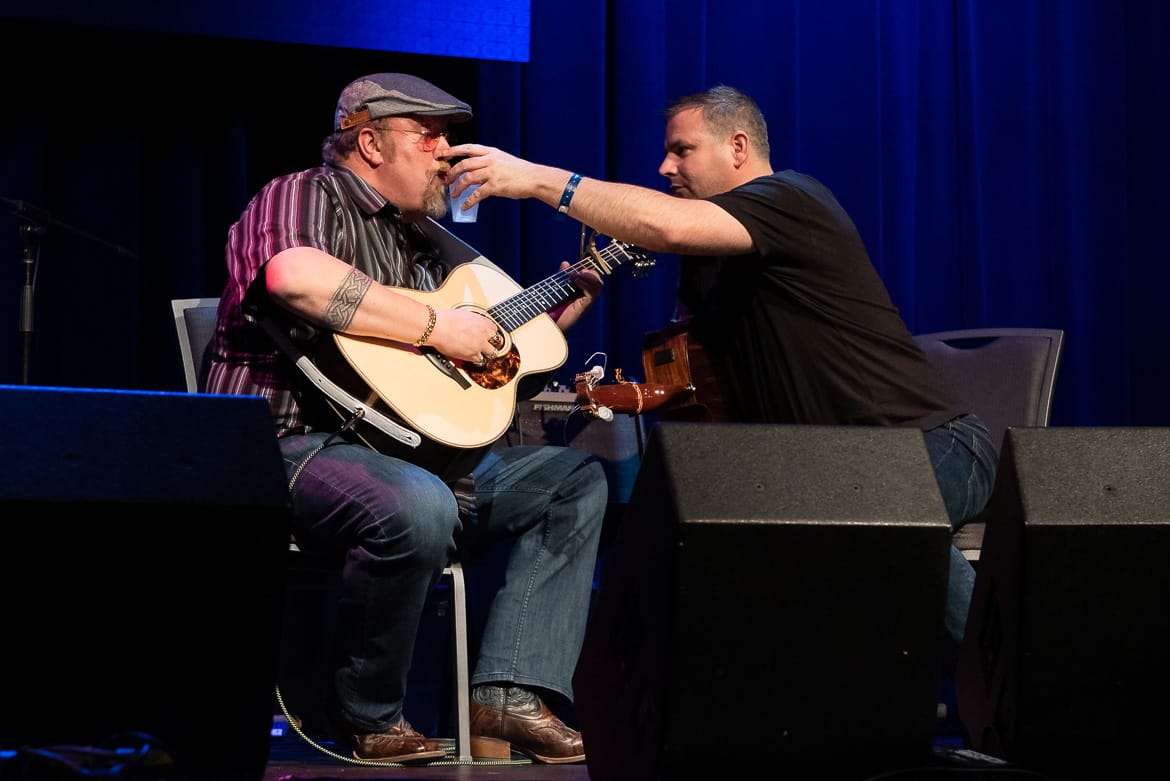
JP Cormier & Tim Edey
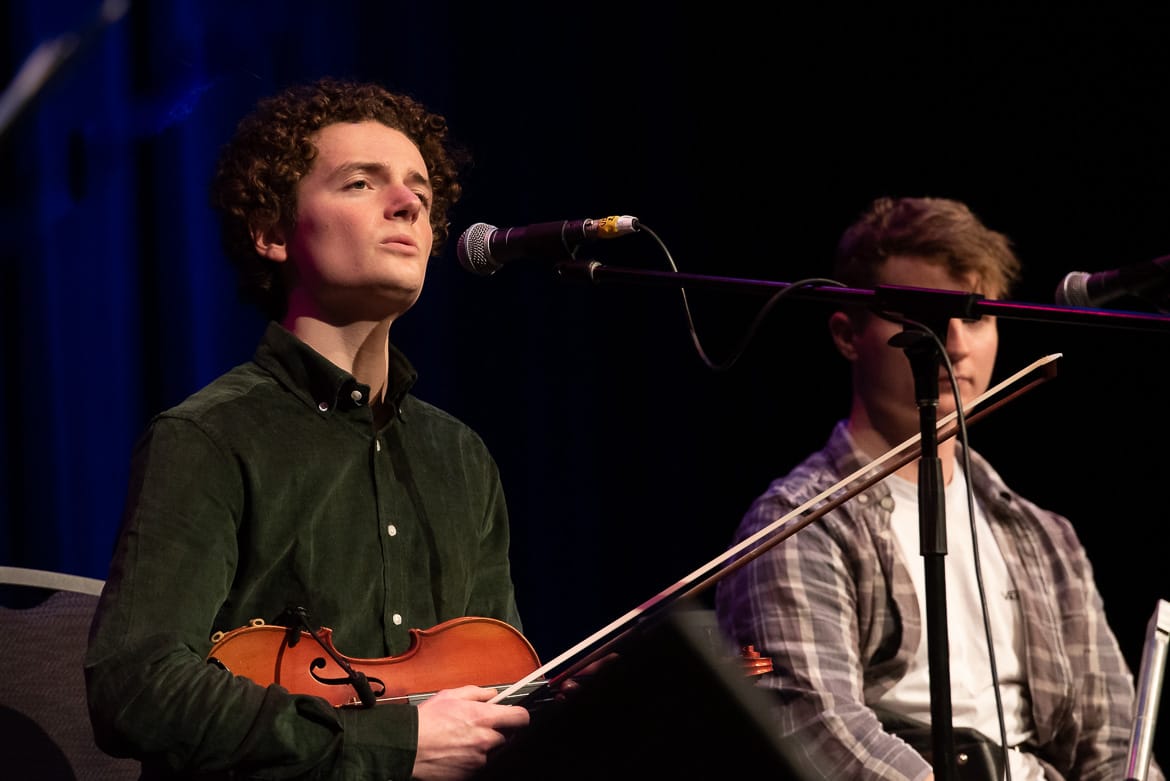
Cameron Nixon
The ‘Craic’ also included two acts from Scotland, the audience particularly warming to Ùr: The Future of our Past, a group of students from Glasgow’s Royal Conservatoire, with their ‘world debut’ performance under the tutelage of guitarist and singer, Jenn Butterworth. Standout amongst them was Cameron Nixon whose surprisingly mature and assured voice gave an authenticity to Ed Pickford’s mining song, Pound a Week Rise; and Jocelyn Pettit endeared herself to the crowd with some step dancing to accompany one of her own tunes, followed by an Alasdair Fraser number.

Jocelyn Pettit with Ùr
Butterworth later joined her Kinnaris Quintet bandmates for a fabulous performance – winning over an audience perhaps used to a more direct and less complex approach to the tunes – with their hypnotic rhythms, soaring builds, and sophisticated harmonies.
Coal mining is close to the hearts of Cape Bretoners, if only because, along with steel, it was one of the two main employers on the island. Now defunct, the industry is remembered in song, and Nipper MacLeod, a former coal miner and leader of the mining choir The Men of the Deeps, looked back with his rich baritone in a solo performance of songs – including his much-loved version of Rita MacNeil’s Working Man – for the community of Lower River Inhabitants.
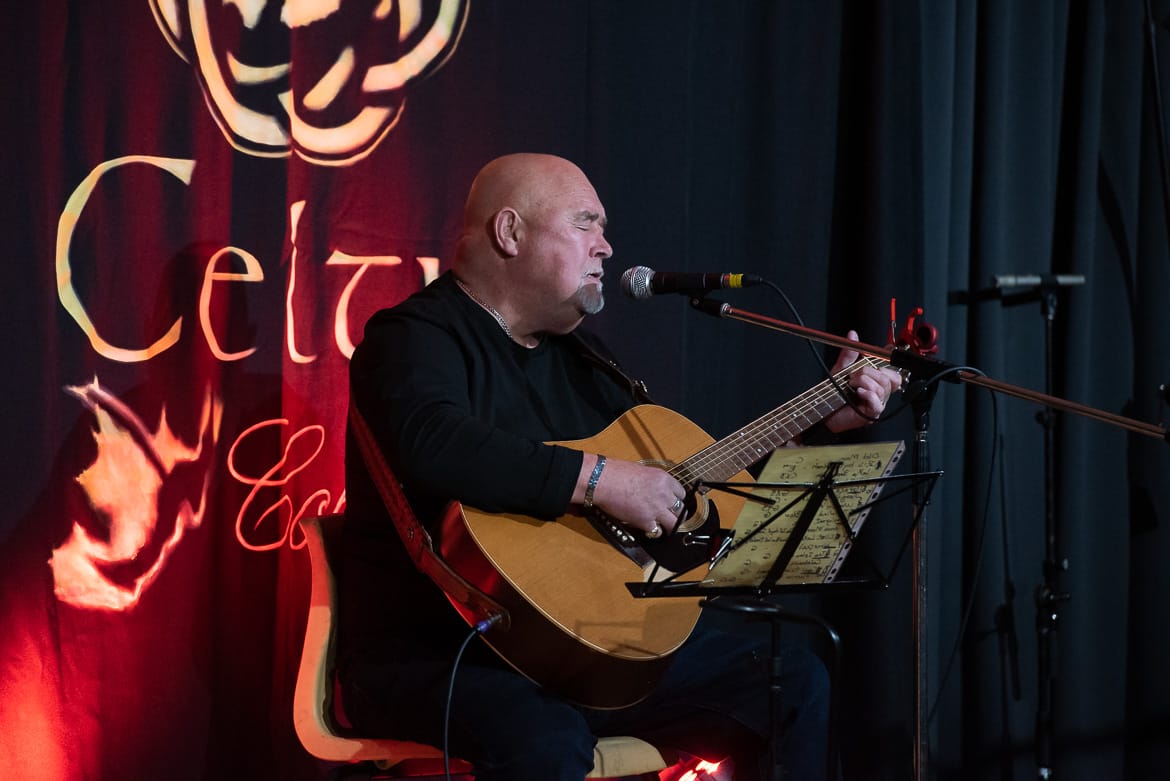
Nipper MacLeod
The Concert – A First Time for Everything – introduced a superb collaboration between John Doyle and Kittel & Co. (led by Michigan fiddler Jeremy Kittel), with Doyle enthralling the audience with his own songs, The Arabic and The Selkie, while Kittel skated around the fingerboard, predominantly recalling his excellent Chasing Sparks CD. Josh Pinkham on the mandolin, the only member of Kittel’s regular band present, showed just why he has been dubbed “the future of the mandolin” by Mandolin Magazine.
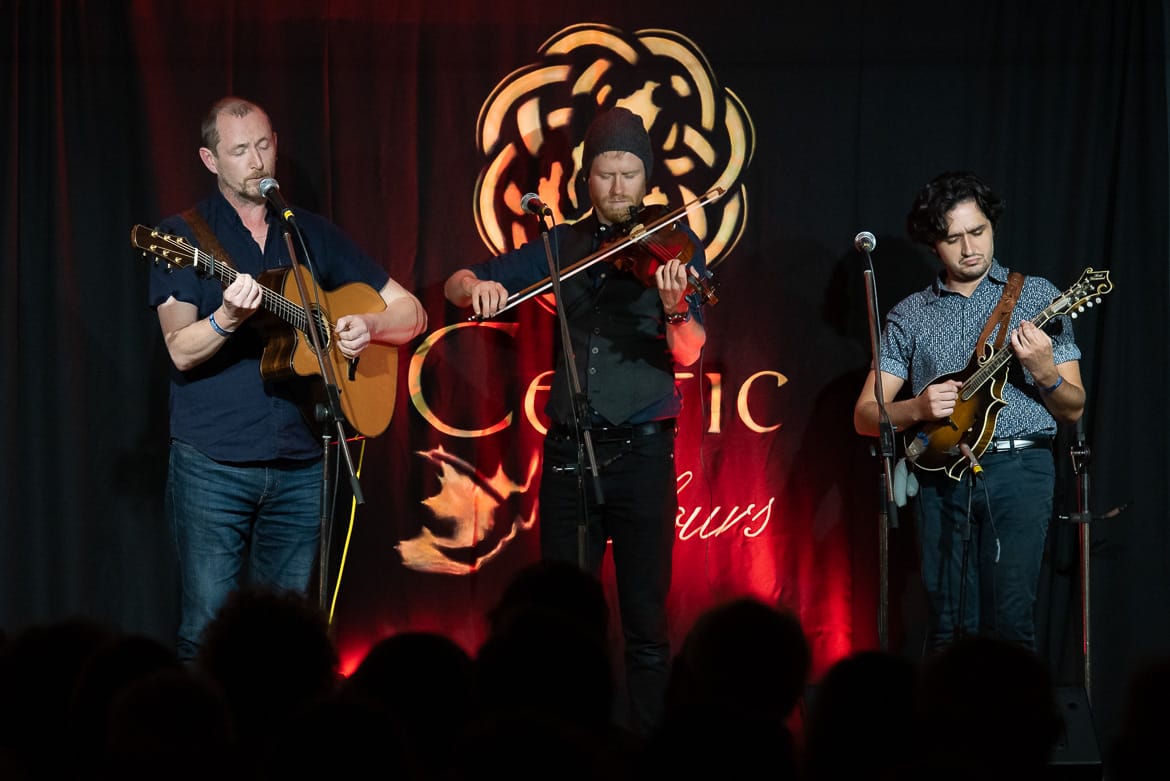
John Doyle & Kittel & Co
The Festival takes place all over the island, requiring a good deal of travel for visitors – but great for locals who can take ownership of the concerts in their particular locale – and Monday had the west coast community of Judique host the Fiddle Frenzy concert.
Headlining were the phenomenal Canadian band, The Fretless, Eric Wright’s cello chopping (this is so much a part of their sound that their merchandise now includes branded chopsticks at $5 a pair) underpinning the beautifully gauged fiddle arrangements of Trent Freeman, Karrnnel Sawitsky, and Ben Plotnick. Intricate sets from their new album, Live from the Art Farm’, as well as from their Juno-winning, Bird’s Nest, had the audience utterly enthralled.
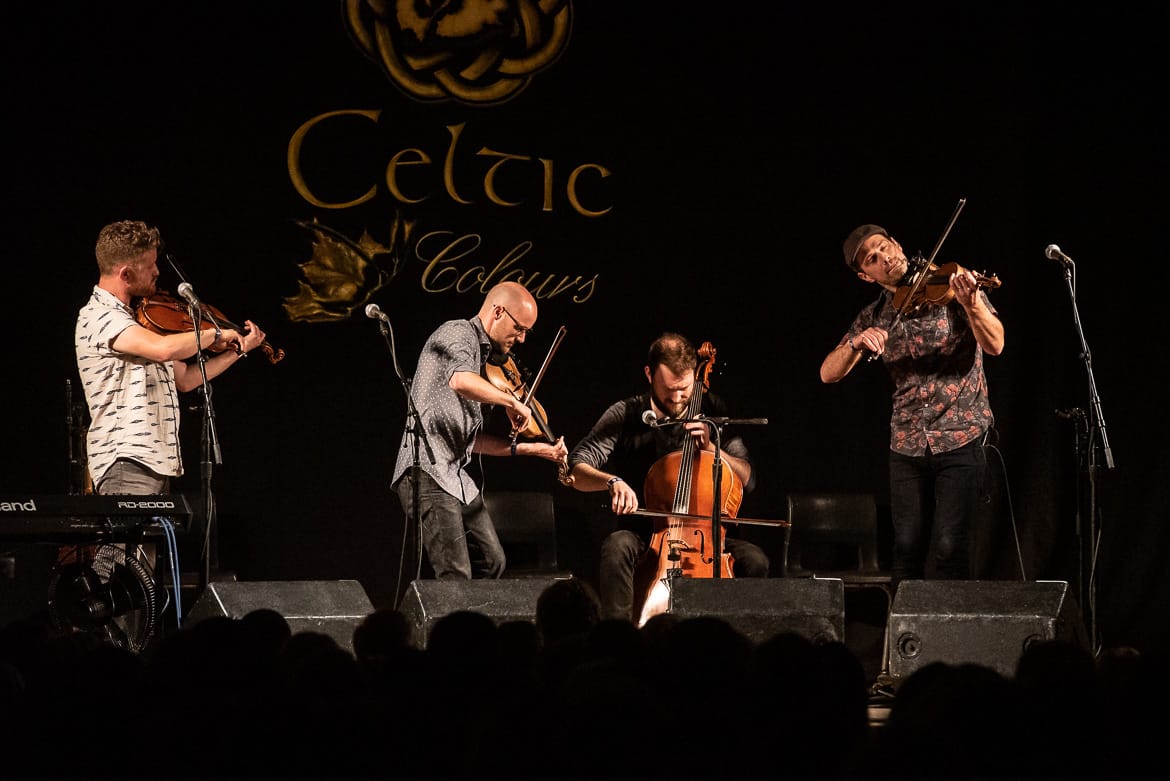
The Fretless
Stan Chapman, teacher of so many great Cape Breton fiddlers, including Natalie MacMaster and Ashley MacIsaac, was joined by another two former pupils in Wendy MacIsaac and Mairi Rankin, while the tune legend that is Brenda Stubbert got together with her two old pals, Patricia Chafe on keyboard and Blanche Sophocleous on guitar, for a classic selection of invigorating and footstompin’ tunes that, in sets of 10 minutes or more, just kept ramping up.
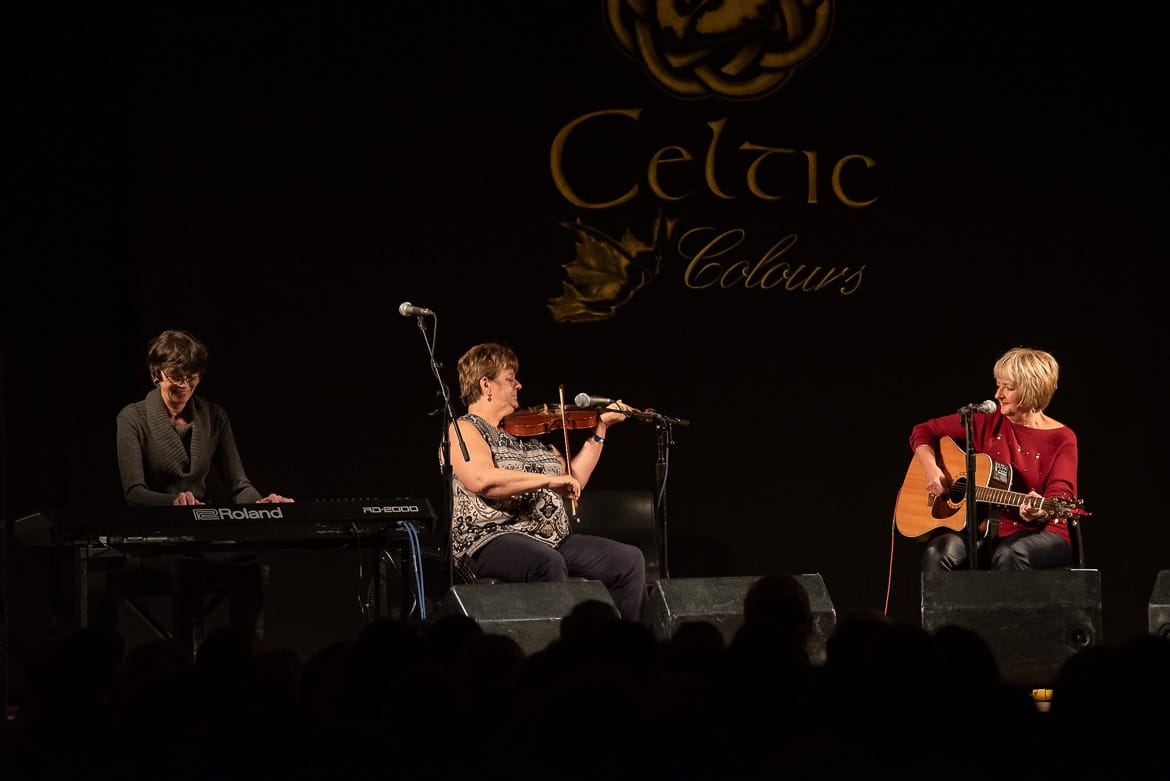
Patricia Chafe, Brenda Stubbert, Blanche Sophocleous
Combining the historical surroundings of the Fortress of Louisbourg, a partial reconstruction of an 18th Century French stronghold, and a variety of acoustic candlelit performances, was Music of the Night, which featured the guitar duo of Maxim and Gervais Cormier performing in the visually and acoustically beautiful surroundings of the chapel. Site guide and former chief, Lindsay Marshall, told traditional Mi’kmaq stories, not missing out on the opportunity to point out, good-naturedly, the irony of addressing an audience of predominantly European descendants.
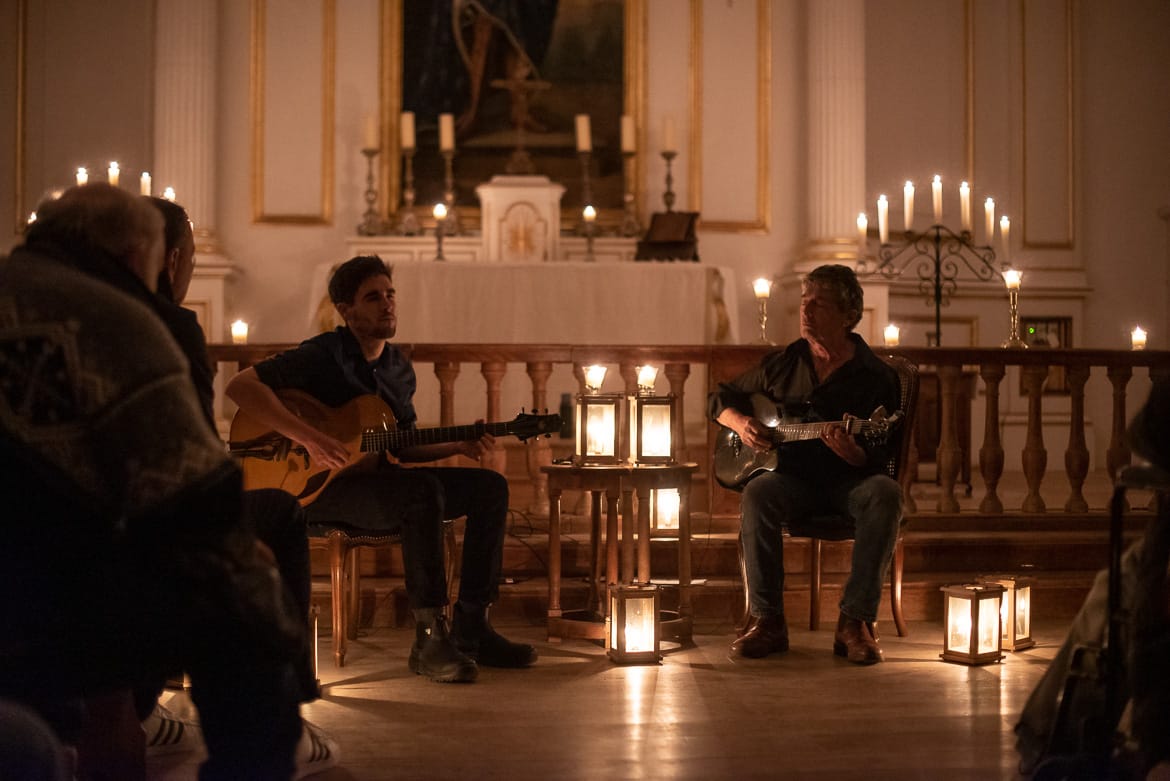
Maxim & Gervais Cormier
Some Gaelic tunes and songs from Gu Smior had the audience joining in and, continuing with The Chieftains’ seemingly all-encompassing reach, the surprisingly commanding presence of Laura Smith – who had the audience in awe as they realised that this was the self-same singer whose hit single, ‘Shade of Your Love’ was one of 1995’s biggest Canadian hits – seeing her reprise her adaptation of My Bonnie Lies Over the Ocean which she’d recorded, back in 1998, with the Irish legends on their Canadian folk collaboration, Fire in the Kitchen.
The latter part of the evening allowed a little bit of amplification as local legend Burton MacIntyre instructed the audience in square dancing to the fiddling of JJ Chaisson, while Acadian singer Nicole LeBlanc and her band brought bawdy French drinking songs to the appropriate setting of the old pub. Orkney’s Saltfishforty rounded the night off to enthusiastic applause with their distinctive style and presence, showcasing their amazing ability to balance their sets perfectly with some incredibly sad tales, humour, and tunes that change it up at every opportunity.
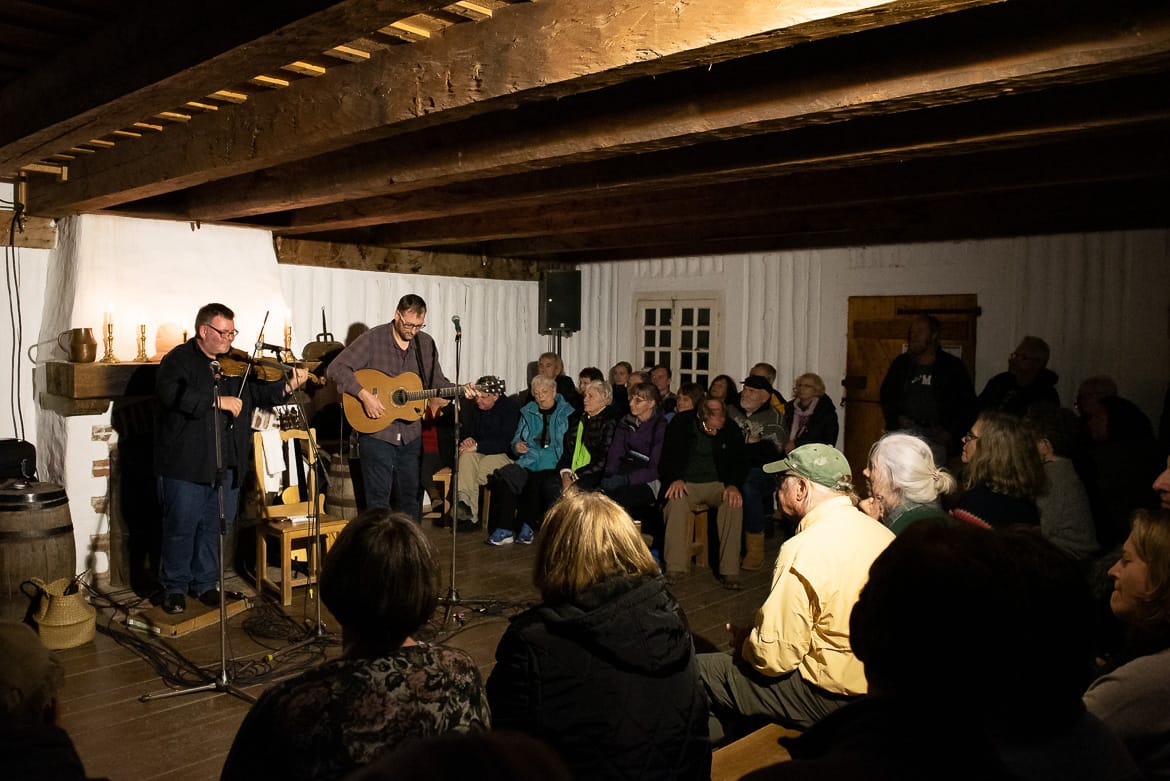
Saltfishforty
One disappointment, though entirely out of anyone’s hands, was the cancellation of the concert at Belle Côte. Due to feature The Outside Track and youngsters NicNeil amongst others, the fierce winds that can reach over 120mph and known as ‘Les Suêtes’ (a local contraction of the French ‘sud-est’ or ‘south-east’) had other ideas, causing an irredeemable power outage. Thankfully there was a chance to catch The Outside Track in blistering form at the club the following night.
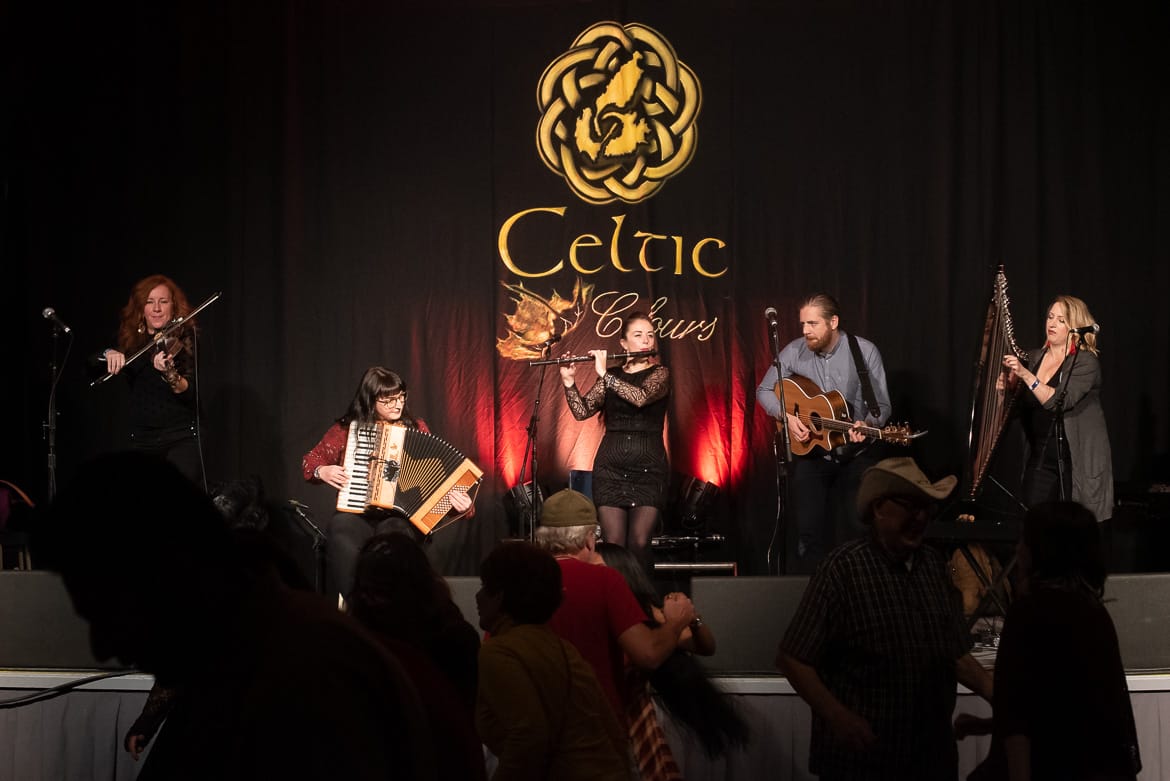
The Outside Track
The closing concert, this time in the Port Hawkesbury Civic Centre at the very south of the island, was opened by the Scots Gaelic singing star, Julie Fowlis. A flawless set – save for Duncan Chisholm’s unfortunately timed broken fiddle string – was particularly notable for the penultimate puirt, Fodor Dha Na Gamhna Beaga, which provided a very impressive, if difficult to follow, lesson in enunciation and breath control; and for Fowlis’ surprise return, having left the stage inexplicably in the middle of the final set, only to return with a set of Highland pipes in full flow for the Last March.
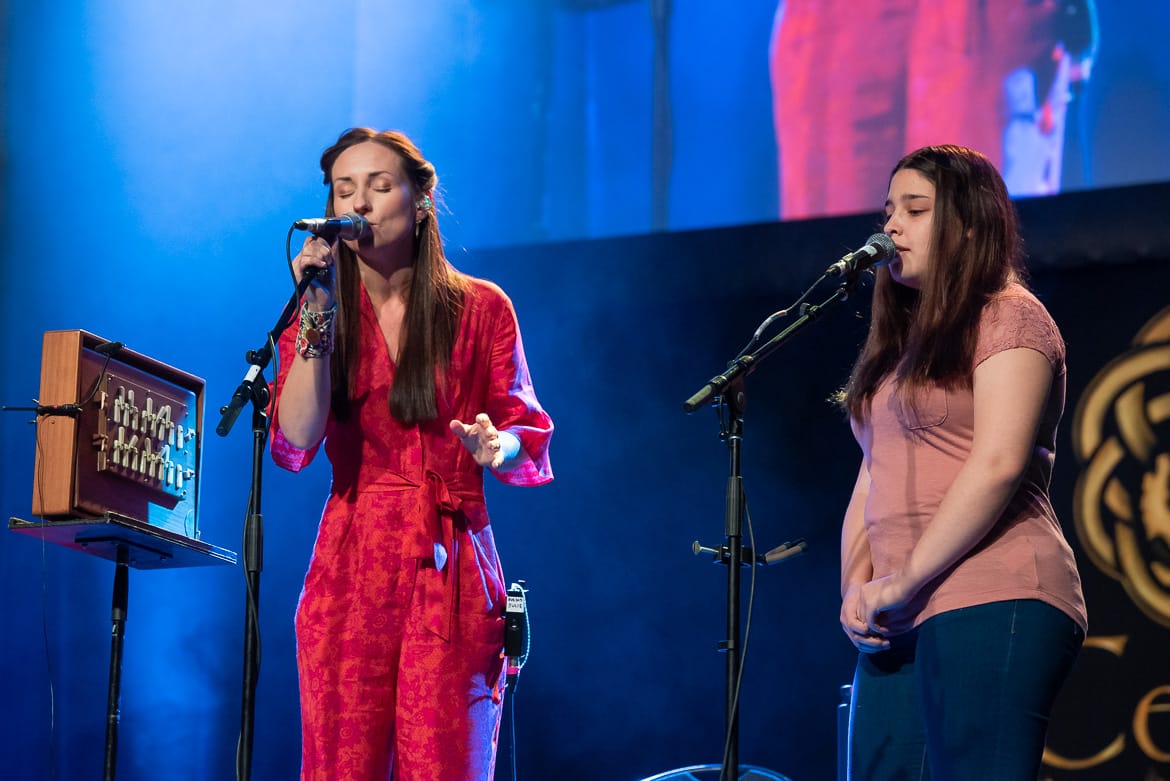
Julie Fowlis & Emma Stevens
But the most wonderful touch of the evening was the coming together of Fowlis with Mi’kmaq singer, Emma Stevens, for the Beatles classic, Blackbird, sung in the Gaelic and Mi’kmaq languages respectively. Stevens had recently come to fame when Paul McCartney gave her a shout out for the version she had recorded at her school in the Eskasoni First Nation – she went on to meet McCartney at his Vancouver concert in June 2019 – and it was a chance conversation that alerted the Festival programmers to the fact that, back in 2008, Fowlis had recorded the song for MOJO’s 40th anniversary celebration of the Beatles’ White Album.

Beòlach & Breabach
The concert rounded off with the joint Musicians in Residence, Breabach and Beòlach, giving it their characteristic laldy. Both played a solo set each with tunes from their current albums; Kilts on Fire from Beòlach who have just released their first new album in 15 years – All Hands, while Breabach had a funky Knees Up in Hanoi followed by Dòchas Glan Na Fàire from their Frenzy of the Meeting. The rest of the set was collaboration between these two outfits who together, having become great friends as they have collaborated, bring a formidable and thoroughly delightful torrent of energetic tunes, but it was one more collaboration that stole the show: when the UnSung Dance Heroes – eight local step dancers who were doing it way before it was cool – were brought onto the big stage for a grand celebration of the tunes and the steps that make Cape Breton’s musical culture so distinctive.
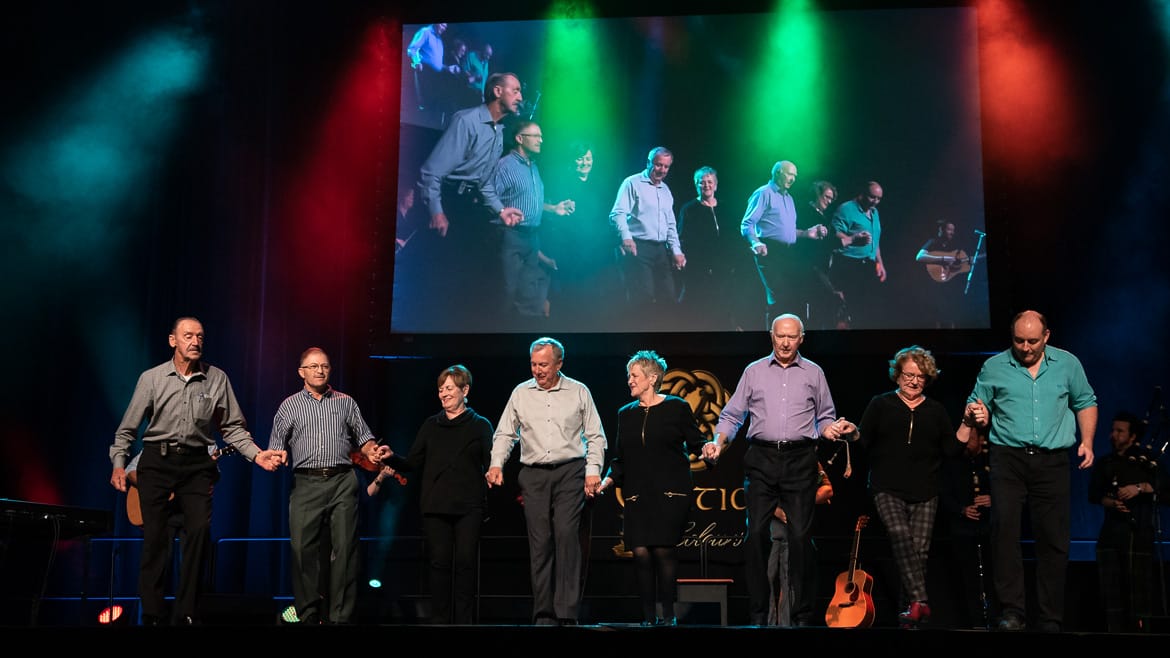
The UnSung Dance Heroes
All images Copyright © Sean Purser

